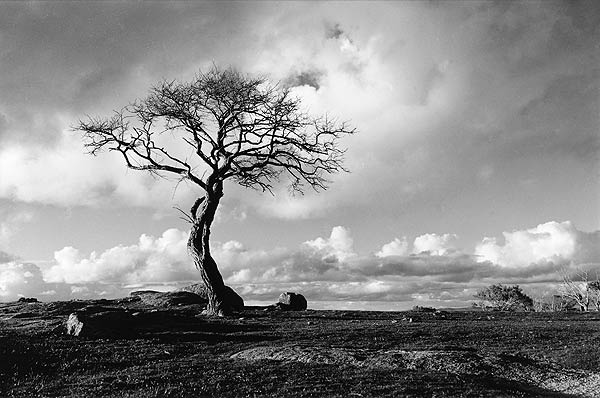|
November 27, 2013
Geoff Schirmer is a Melbourne based landscape photographer who works in black and white and large format. He is a traditionalist in the sense that he does his own film processing and printing. Black and white for him presents the viewer with a different way of seeing in that it invites the viewer to experience a subject in terms of shape and form - tone and texture - light and shade - without the distraction of colour.
 Geoff Schirmer, Dog Rocks, Victoria
Geoff Schirmer, Dog Rocks, Victoria
Dog Rocks at Batesford is well known amongst the Victorian photographic community as a venue to make some magnificent landscape photographs. Located 10 kilometres west of Geelong, Dog Rocks is a changeable landscape with the windswept trees being deciduous, and during summer the surrounding grasses turn brown. The rocks were formed 365 million years ago and are the oldest rocks known of in Victoria.
Schirmer photography is concerned to juxtapose what is actually seen and what lies beyond the image as a symbol. The symbol, which “fully represents within itself the whole of which it is a part”, provided the Romantics a means of escaping the dualistic, mechanistic universe of the Enlightenment, through a new mythology
In the Romantic view, symbols were the human aesthetic correlatives of nature's emblematic language. They were valued too because they could simultaneously suggest many things, and were thus thought superior to the one-to-one communications of allegory. Partly, it may have been the desire to express the "inexpressible"--the infinite--through the available resources of language that led to symbol at one level and myth (as symbolic narrative) at another.
The Romantic concept of the symbol sees nature as possessing significance for humans far beyond functionality and appearance. It is a response to the central problem of modernity: humanity's feeling of estrangement in the world subsequent to the rise of science and the collapse of the medieval world-view, with its confidence in the inherent meaningfulness of nature and the purposiveness of life. The Romantic concept of the symbol exercised a compensatory function: the greater the feeling of estrangement, the more insistent become the calls for seeing nature as "a symbolical language for something within me.
The symbol ascribes noumenal content to the signs of nature.
|
